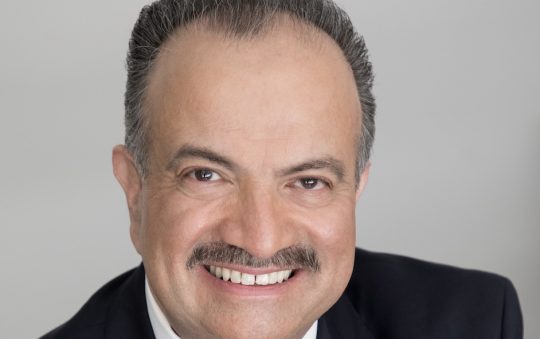
As Angelenos brace themselves for results of an autopsy and investigation regarding the death of an unarmed Black man in South Los Angeles by the Los Angeles Police Department, I thought we’d take a trip back down memory lane as it relates to three little but very important words: I can’t breathe.
Long before now New York Police Commissioner William Bratton saw the video of Eric Garner’s tragic death, he’d heard “I can’t breathe.”
In my best imitation of Estelle Getty’s character Sophia Petrillo-Weinstock from the TV series “The Golden Girls,” picture it, Los Angeles. The year was 2006.
The Chief of the LAPD was William J. Bratton. The Department was still under a federal consent decree issued in 2001 in the wake of the Rampart scandal.
Bratton as you may or may not recall was selected by then Mayor James Hahn to help reform the embattled LAPD. Bratton—who headed the New York City Transit Police and the Boston Police, before being appointed New York City Police Commissioner in 1994—was seen as an outsider and just what the doctor ordered for a police department who scandals at the time were the talk of the country and the ire of Angelenos.
In mid-November of 2006 a YouTube video surfaced of a Latino man on the ground in Hollywood with a LAPD officer’s knee on his throat.
As the man struggled with officers you can hear him repeatedly say—wait for it—wait for it—“I can’t breathe.”
The man is William Cardenas and he told Fox 11 news reporter Jeff Michaels that on Aug. 11, 2006 he was punched over and over by the LAPD Officer Patrick Farrell and told to “shut the fuck up.”
The video shows Cardenas being punched in the face as many as six times by Farrell. You can also hear Cardenas telling Farrell and his partner Alexander Schlegel that he could not breathe after being sprayed with pepper spray.
Bratton defended both the officers and the Department’s handling of the ensuing investigation in a Los Angeles Times article.
Bratton is quoted in The Times saying, “it is very graphic video but as to whether the actions of the officers were appropriate in light of what they were experiencing and the totality of the circumstances is what the investigation will determine. It is quite clear while struggling, one of the officers struck the individual in the face … but that is not life-threatening.”
According to news reports at the time, the 23-year-old Cardenas was seen by the officers drinking beer with two friends on the corner of Fountain Avenue and Gordon Street in Hollywood. Officer Schlegel testified that he recalled that Cardenas had a warrant for failing to appear on a charge of receiving stolen property. The LAPD also contended that Cardenas was a member of the Gordon Street Locos gang.
Both Farrell and Schlegel are still police officers for the LAPD today, with Farrell still working in Hollywood.
Moving right along…
Shortly after the video surfaced of Cardenas’ “I can’t breathe,” along came the 2005 video of LAPD officers on the Venice boardwalk using pepper spray on a handcuffed suspect in the back of a patrol car.
Benjamin Barker a homeless man was arrested after getting into a fight with a merchant on the boardwalk.
According to The Times, the videotape shows Barker in handcuffs as he is bent over a patrol car. As the officer pushes him into the car, Barker can be heard saying, “Why am I going to jail?”
Once Barker is in the back seat, he starts shouting: “I can’t breathe! I can’t breathe! Don’t spray me!”
One officer is heard saying: “He knows what’s happening.”
Another officer takes a pepper-spray canister from his belt, shakes it and leans in to apply it to Barker’s face.
The officer closes the doors of the patrol car and steps back. Barker is seen holding his face up to the car window, his features contorted in pain.
Even with major discrepancies in the reporting of the incident, the police union and Bratton backed up the officers involved.
So as you can see, this isn’t Bratton’s first time with “I can’t breathe” at the hands of cops under his command. The only difference between Eric Garner’s situation in New York and Barker and Cardenas in Los Angeles, is that the latter two lived to see another day whereas Garner did not.
Jasmyne CannickOn television, radio, online and in print, Jasmyne Cannick is a social and political commentator on race, politics, and pop culture issues. She can be found on Twitter @Jasmyne and on Facebook at /jasmynecannick. Her website is www.jasmyneonline.com.






